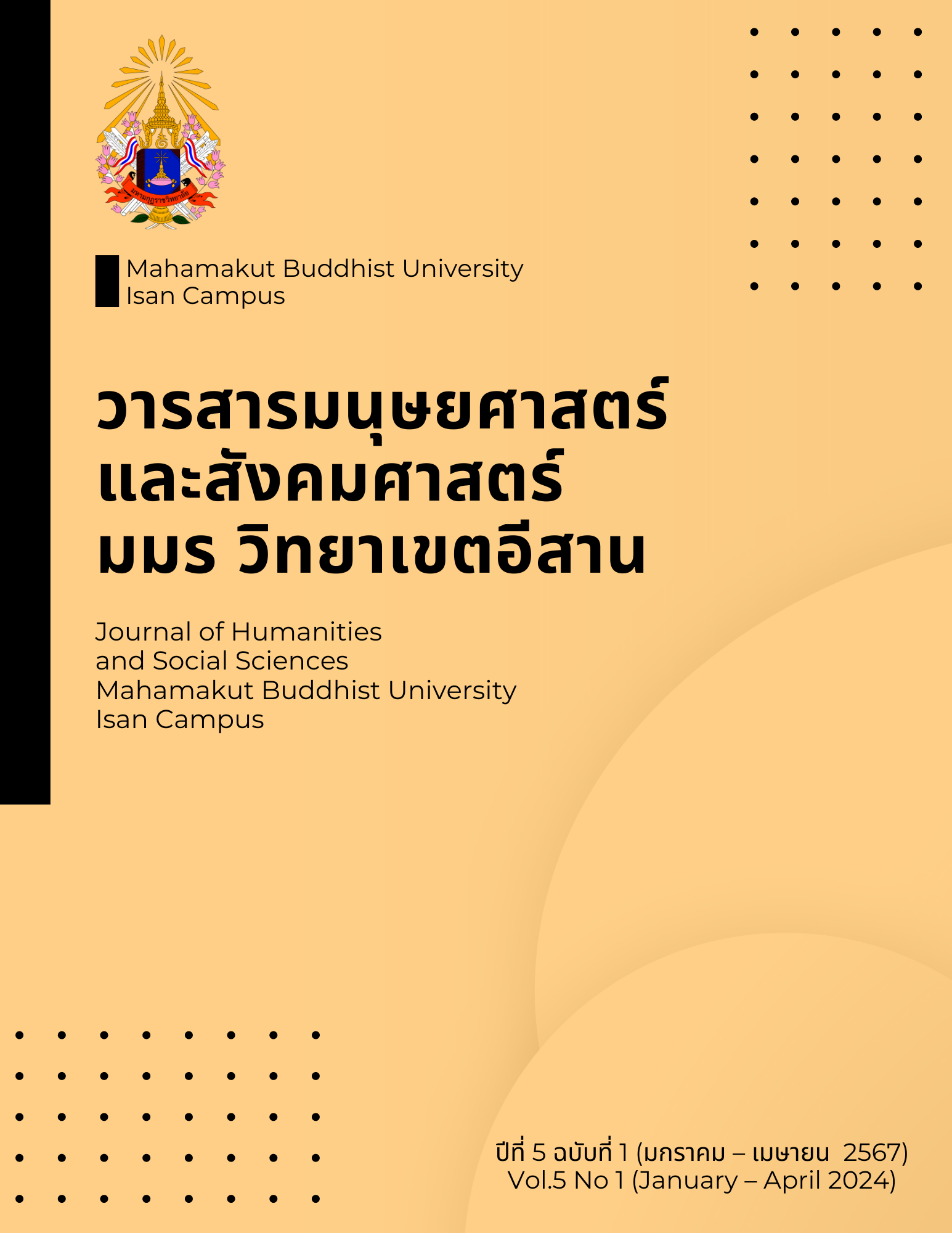COMPONENTS OF INNOVATIVE TEACHING OF BUDDHISM FOR THE DEAF-MUTE
Keywords:
principles of Buddhism, the deaf-mute, Buddhism, innovative teaching of BuddhistAbstract
The deaf-mute are vulnerable people in society. The mind is weak and does not have the strength to deal with problems that come upon it. Something that will solve the problem or complete the problem. Empowering the hearing impaired Being immune to problems and obstacles, that is the principle of the Buddha's teachings. These are principles that help prevent and solve life problems very well. Therefore, to make the deaf-mute understand the principles of Buddhism, we must create teaching innovations through media that are interesting to those groups of people. And must be appropriate for their age as a medium of communication for the hearing impaired to understand the principles of Buddhism. And the elements of innovative teaching of Buddhism for to make the deaf-mute understand the principles of Buddhism use a systematic approach to improvement. And inventing and developing new methods of teaching Buddhism That can develop to make the deaf-mute understand the principles of Buddhism consists of 3 things: 1) things that are perceived visually, 2) media that has both sound and images, and 3) computer technology media. and the principles that appear in the story of Sam Pong Sam Kiew that to make the deaf-mute understand the principles of Buddhism can easily understand and apply to daily life. Each point can be analyzed according to Buddhist principles, including the principle of carelessness., Taṇhā 3, Khandha 5, Kalama Sutta principles, Brahmavihāra Dhamma 4, Iddhipāda principles 4
References
ศรียา นิยมธรรม. (2541). ความบกพร่องทางการได้ยิน ผลกระทบทางจิตวิทยา การศึกษาและสังคม. กรุงเทพมหานคร: โรงพิมพ์พีเออาร์ดแอนพริตติ้ง.
ศิวนารถ หงส์ประยูร. (2561). แนวทางการเขียนบทรายการโทรทัศน์ภาษามือเต็มจอสำหรับคนพิการทางการได้ยิน, วารสารนิเทศศาสตร์ ธุรกิจบัณฑิตย์, 12 (2): 347
สมเด็จพระพุทธโฆษาจารย์ (ป.อ.ปยุตโต). (2562). พุทธธรรม ฉบับปรับขยาย. พิมพ์ครั้งที่ 53. ม.ป.ท.
สหภาพ พ่อค้าทอง. (2547). การสื่อสารด้วยข้อความสั้นผ่านโทรศัพท์มือถือ (SMS) ในฐานะสื่อวัฒนธรรมประชานิยม (Popular Culture) ของผู้บกพร่องทางการได้ยิน ในกรุงเทพมหานคร. กรุงเทพมหานคร: มหาวิทยาลัยธุรกิจบัณฑิตย์
สำนักงานคณะกรรมการพัฒนาการเศรษฐกิจและสังคมแห่งชาติ สำนักนายกรัฐมนตรี. (2560). แผนพัฒนาเศรษฐกิจและสังคมแห่งชาติ ฉบับที่สิบสอง พ.ศ. 2560-2564. กรุงเทพมหานคร: สำนักนายกรัฐมนตรี
สำนักงานส่งเสริมแห่งชาติ. (2554). บทบาทภาครัฐเพื่อการส่งเสริมและพัฒนาคุณภาพชีวิตคนพิการ, บริษัทสามเจริญพาณิชย์ (กรุงเทพ) จำกัด



